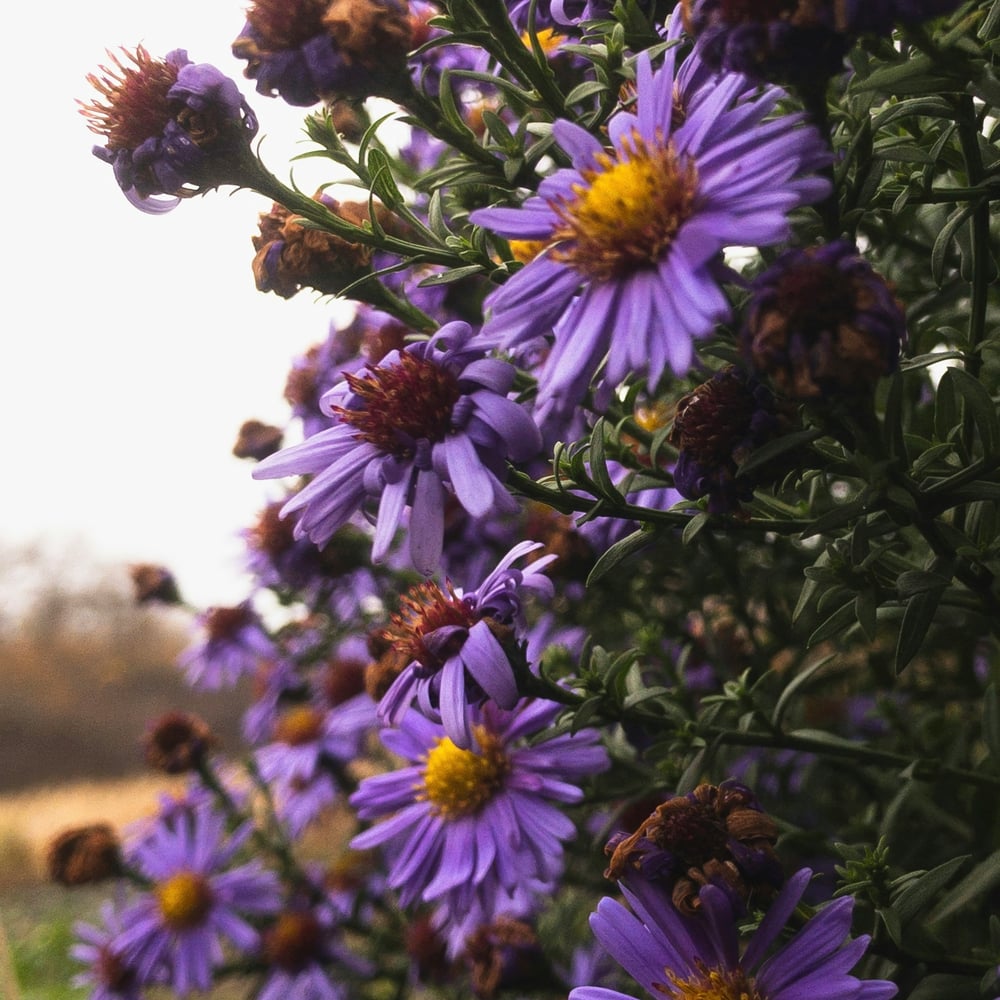New Jersey's State Flower: Purple Aster
 Meet Purple Aster
Meet Purple Aster
Officially the state flower of New Jersey, the purple aster is quite dear. Its vivid colors cover the state's meadows and gardens, therefore reflecting not only the natural beauty but also the resiliency of the land. More than just a beautiful sight, this bloom speaks to New Jersey residents about their relationship to environment and community.
History and Significance of the Purple Aster
Aster's Journey
The trip of the purple aster to become the state flower of New Jersey is interesting and noteworthy. Officially assigned in 1972, it was selected for its beauty and broad state distribution. Native to North America, its bloom thrives in a range of environments—from wide fields to woodlands—that fit a state known for its tremendous variety of landscapes. The adaptability of the purple aster represents New Jersey's own readiness to embrace variation and change.
Get Your Flowers for Delivery in New Jersey
Cultural Importance
Choosing the purple aster emphasizes its significance for New Jersey's culture. Parks and along roadsides, its vivid blossoms bring delight and a dash of color to daily life. The flower's ability to withstand several seasons reflects the will and fortitude of New Jersey people. More than just a flower, it captures Garden State pride and identity.
Biological Information
Though usually known as Symphyotrichum cordifolium, the purple aster belongs to the Asteraceae family. On this perennial plant, brilliant purple blossoms and lovely heart-shaped leaves draw bees and butterflies. The breathtaking show produced by the cluster of blossoming flowers will remain long into the fall, so improving the surroundings.
These asters may flourish in both sunny and partly shaded environments and like well-drained soil. Particularly in dry seasons, they demand regular watering and have rather little upkeep. Gardeners love them and choose them naturally for native plant landscaping in New Jersey since of their resilience.
 Blooming Period
Blooming Period
The blooming season for the purple aster is a highlight of New Jersey's fall. Generally, these flowers start to bloom in late summer, peaking from September to October. Their blossoms, which indicate the change of seasons, can endure anywhere from few weeks to a month depending on the temperature. The vividness of the aster not only accentuates the surroundings but also reminds one of the beauty that changes come with.
Meaning, Symbolism, and Representation
Rich metaphorical connotations abound from the purple aster. For faith, intellect, and love it stands. In New Jersey, it is a cultural emblem engaged in regional festivities and events, not only a flower. Frequent in floral designs, the aster is a popular choice for many celebrations since it stands for happiness and hope.
The aster has been seen historically as a symbol of strength and beauty, therefore capturing New Jersey's attitude. It reminds us of the state's natural legacy as well as the energetic communities who call it home.
Aster's Connection to New Jersey
One amazing flower that quite accurately depicts New Jersey is the purple aster. It reflects the history and soul of the state, therefore improving its natural beauty. We are reminded of the charm and resiliency that distinguish this energetic condition as we enjoy the brilliant purple blossoms.
New Jersey's State Flower FAQ
What is the significance of the purple aster as New Jersey's state flower?
The official state flower for New Jersey is the purple aster in 1972. Its choice captures the broad range and cultural tradition of the state. The flower appeals to people of New Jersey by symbolizing endurance and beauty—qualities they respect. It thrives in diverse surroundings so it is flexible and able to flourish in spite of challenges. Apart from a decorative accent of the landscape, this flower represents communal pride and natural legacy.
Where can purple asters be found in New Jersey?
From open fields and meadows to forest margins, purple asters abound in many New Jersey settings. Gardeners would find them a flexible choice since they flourish in both sunny and somewhat shaded environments. Usually found in state parks, natural reserves, and by roadsides, these blossoms brighten the scene especially in late summer and early fall. Their diversity provides native species with the habitat they need and highlights New Jersey's diverse ecosystems.
How do I care for purple asters in my garden?
Purple asters are preferred by gardeners due to their low maintenance requirements. They thrive in areas with full sun or minimal shade and require soil that drains properly. To maintain the plants healthy and flowering, especially during dry seasons, regular watering is absolutely vital. Cutting down the plants following flowering will help to promote development. Dividing the plants every few years can also encourage good development and help to avoid crowding. These tough blooms will keep your yard brilliant for years to come with little care.
What do purple asters symbolize?
Rich in symbolism, purple asters also symbolize for insight, faith, knowledge, and love. Many ceremonies incorporate flowers, since they have been connected in many civilizations with fresh starts and hope. Often used in floral arrangements for weddings, celebrations, and community events in New Jersey, these blossoms reflect happiness and beauty. Their importance beyond basic decoration; they motivate us of the relationships we have with the surroundings and the necessity of remembering the turning times in our lives.
When is the best time to see purple asters blooming in New Jersey?
Usually starting in late summer, purple asters peak bloom from September to October. As the leaves begin to turn, the vibrant purple tones of the blossoms provide a spark of color to the scene. Their blooms can last several weeks, depending on the weather conditions. Visiting parks or natural areas in the early fall is a fantastic way to experience the beauty of purple asters and appreciate their role in New Jersey's diverse ecosystems.











